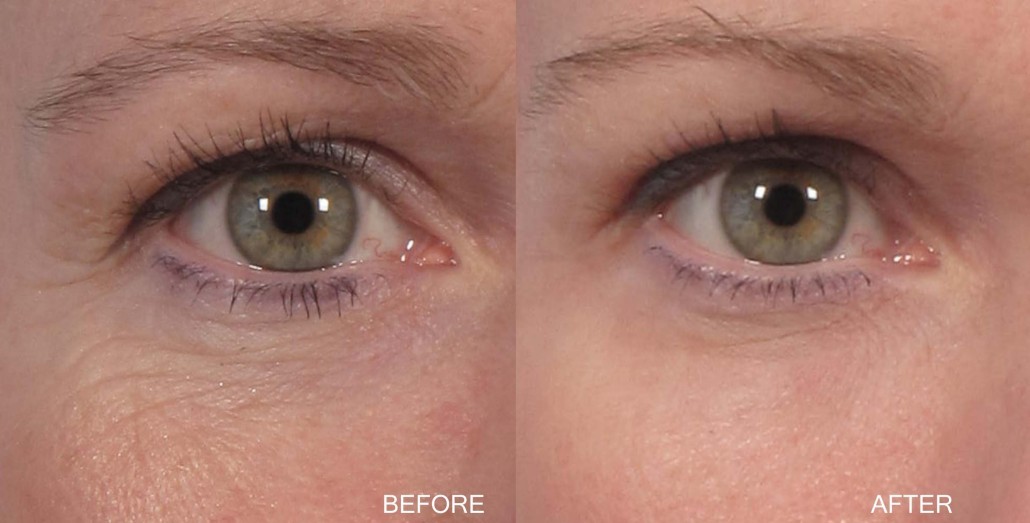What it treats
Skin resurfacing treats wrinkles and fine lines, brown spots, sun damage, and skin texture issues. A laser or chemical peel creates a controlled skin injury, followed by recovery. The skin’s innate repair mechanisms lead to increased skin collagen content and thickness.
How eyelid resurfacing is done
Chemical peel
A cleanser and de-greasing agent is applied to the skin prior to treatment. A thin, even coat of a peeling agent is applied to the skin surface. Frosting or a white discoloration may appear depending on the chemical used, indicating coagulation of skin proteins with vasoconstriction. Multiple chemical layers may be applied at the same session depending on the desired depth of effect. In certain cases, a neutralizing agent may be applied.
Peels can be mild or deep depending on the agent used and its concentration. Commonly used peels include glycolic acid, phenol, and TCA.
Anesthesia can range from no agents to local anesthetic, to intravenous sedation. Certain peels such as phenol agents require cardiac monitoring.
Laser resurfacing
A cleanser and de-greasing agent is applied to the skin prior to treatment. Laser energy is delivered to the areas of concern. The laser energy is transmitted through a handpiece held by a provider. The laser settings determine the energy, spot size, delivery speed, and depth of the treatment.
Erbium and carbon dioxide are two common types of resurfacing lasers. Erbium lasers tend to be milder and may require more treatment sessions. Both can be performed in a fractional manner, which allows for small spaces of skin to be untouched during the treatment. Fractional delivery has been shown to reduce downtime and complications after resurfacing.
Comfort measures during the procedure may include a topical numbing cream, cooled air, anesthetic injections, and/or intravenous sedation.
Follow-up care after eyelid resurfacing
After the treatment, the skin can become flaky and will peel at 3-7 days. Redness can last for days to weeks. Deeper peels or lasers will result in more redness and require more post-procedure care on the part of the patient. Aggressive peels and ablative lasers that remove the outer surface of skin often require post-procedure occlusion which may be accomplished with a physical dressing or a barrier cream. Sun avoidance during the healing period is mandatory.
Topical retinols, when used regularly after treatment can enhance the overall results. Topical anti-pigmentation agents can minimize discoloration after treatment and can help to resolve post-inflammatory hyperpigmentation.
Risks of eyelid resurfacing
Ectropion or pulling-down of the lower eyelid, dry eye, hyperpigmentation or darkened skin color, hypopigmentation or loss of skin color, scars, mottling, and infection.

